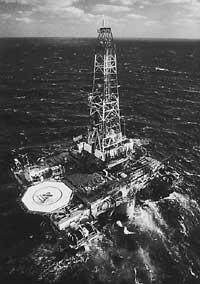Road of origin?
According to researchers at the Netherlands Marine Research Institute, oil is being returned to its original form when used to manufacture plastics. In fact, the canals that make up most of the oil come from natural plastics produced by seaweed.
Canals are carbon chains saturated with hydrogen. The smallest reaches are gases, such as propane and butane, but the heaviest ones are liquid and account for about 80% of the hydrocarbon mixture that forms crude.

According to researchers, oil canals are formed when large organic molecules accumulated in marine sediments are broken down by pressure and temperature. Some researchers believe that these organic products are carbohydrates and proteins of dead marine animals. However, these substances are quickly digested by bacteria and it does not seem possible to settle them on the seabed.
The team of researchers from Holland began to investigate the origin of the camo, when in the late 80's it was discovered that many freshwater algae produce polyethers. In polyethers the long chains of carbon atoms are joined by oxygen atoms forming a mesh difficult to degrade.
Polyethers can accumulate at the bottom of the lakes and researchers began to think if the same could happen on the seabed. Seven species of plankton algae were analyzed, four of which contained polyethers in their cell membranes.
To simulate what may occur in marine sediments over several million years, researchers heated the biopolymer for 10 seconds to 600°C and obtained similar ranges from those found in oil. Despite the treatment of marine sediments in the same way, they achieved a similar mixture of swiddens.





